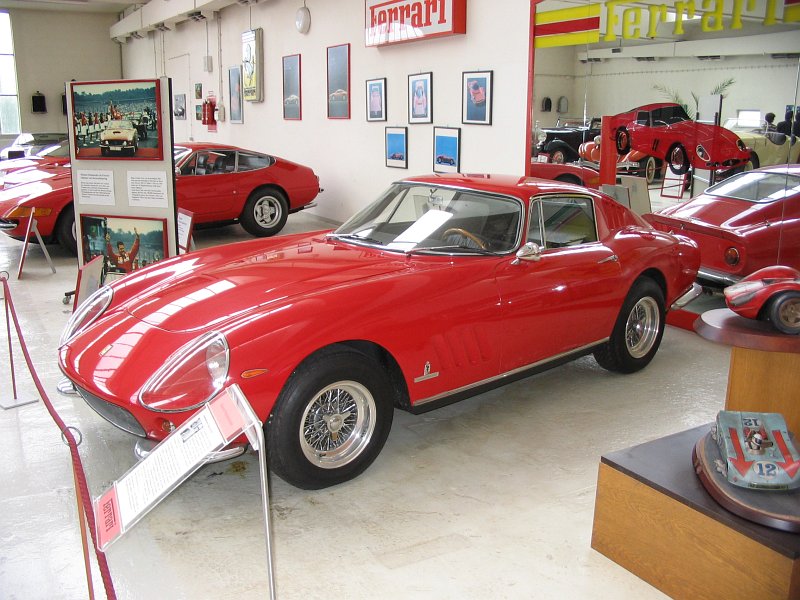Description
The Ferrari 275 GTB, introduced at the 1964 Paris Motor Show, marked a significant evolution in Ferrari’s road-going grand tourers, both in mechanical sophistication and in design. It succeeded the legendary 250 series and represented Ferrari’s shift toward a more modern GT layout, combining racing-inspired engineering with refined, long-distance touring ability. Designed by Pininfarina and built by Scaglietti, the 275 GTB blended elegance, speed, and technical innovation in a way that set the tone for Ferrari’s later front-engined V12s.
At the heart of the 275 GTB was the Colombo-designed 3.3-liter V12 engine, designated Tipo 213 in the early cars. In standard form, this unit produced around 280 horsepower with three Weber carburetors, although a higher-performance option with six carburetors pushed output closer to 300 horsepower. The engine was mated to a rear-mounted five-speed transaxle — the first time Ferrari used this layout on a road car — which improved weight distribution and handling. Combined with a fully independent suspension at both ends, another first for Ferrari’s road cars, the 275 GTB delivered exceptional road manners and stability at high speeds.
The early 275 GTBs featured the so-called “Short Nose” bodywork, which was visually compact and beautifully proportioned but created aerodynamic lift at extreme speeds. In mid-1965, Ferrari introduced the “Long Nose” variant, with a subtly elongated front section and revised aerodynamics to improve high-speed stability. Both versions shared the same fundamental fastback silhouette, with a long hood, flowing roofline, and muscular rear haunches. Scaglietti offered bodies in both steel and lightweight aluminum, the latter often chosen for competition use.
Inside, the 275 GTB offered a driver-focused cabin that balanced performance-oriented simplicity with understated luxury. Leather-clad bucket seats, a wood-rimmed steering wheel, and a clean, functional dashboard layout created an environment tailored for long-distance, high-speed travel. While it was not as plush as some contemporary grand tourers, it provided the refinement expected of a Ferrari GT while keeping the driver fully engaged.
The 275 GTB also had a strong connection to Ferrari’s racing activities. Lightweight alloy-bodied examples and special competition variants — such as the 275 GTB/C — were campaigned in endurance racing, including the 24 Hours of Le Mans, where they proved competitive against purpose-built race cars. Even standard road versions retained a strong performance character, capable of top speeds exceeding 250 km/h.
Production of the 275 GTB lasted until 1968, when it was replaced by the 275 GTB/4, which introduced a four-cam version of the V12. The original two-cam 275 GTB remains highly sought after today for its combination of classic Pininfarina design, technical innovation, and mechanical purity. Its blend of beauty, balance, and performance has made it one of the defining front-engined Ferraris of the 1960s and a cornerstone of the marque’s GT heritage.

